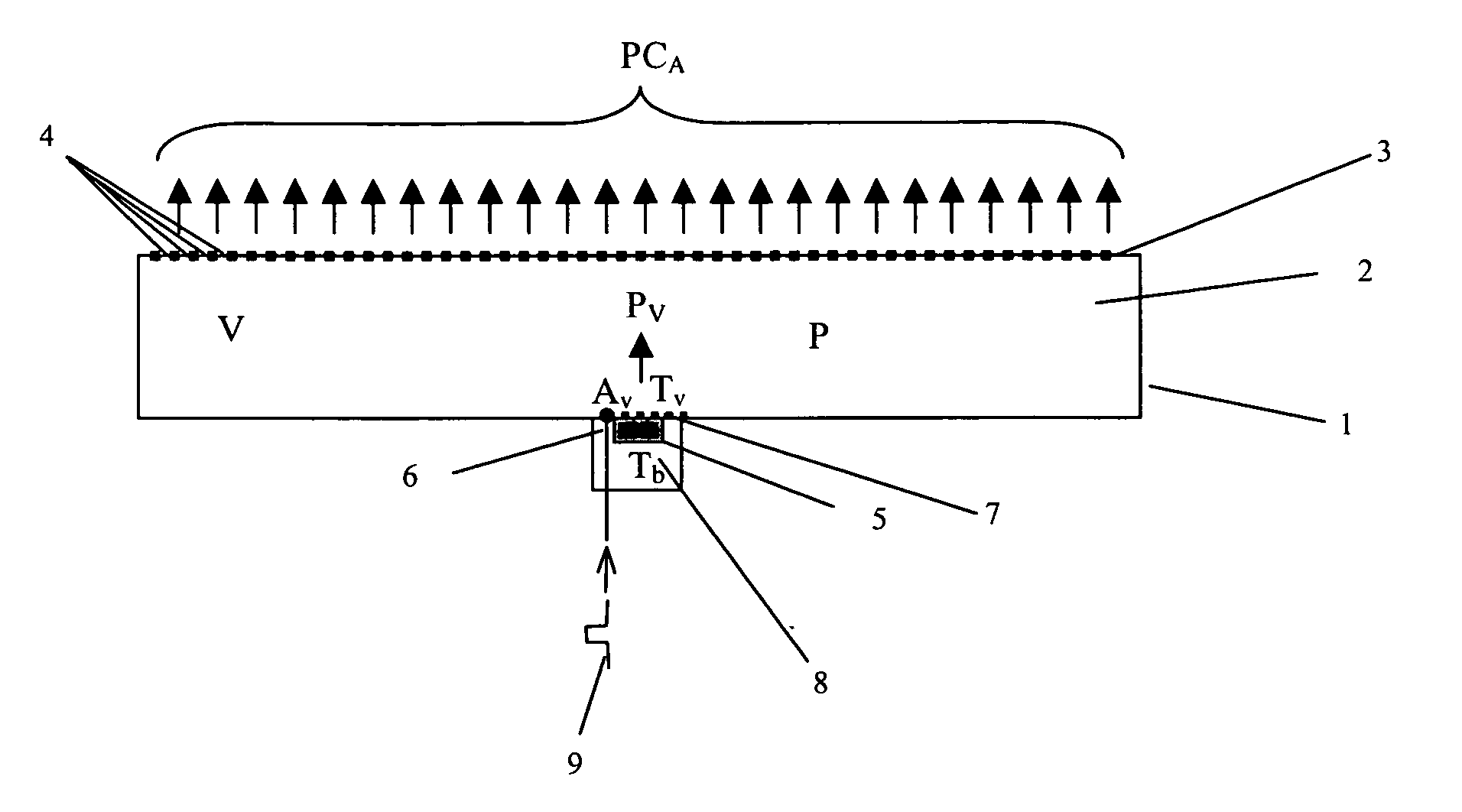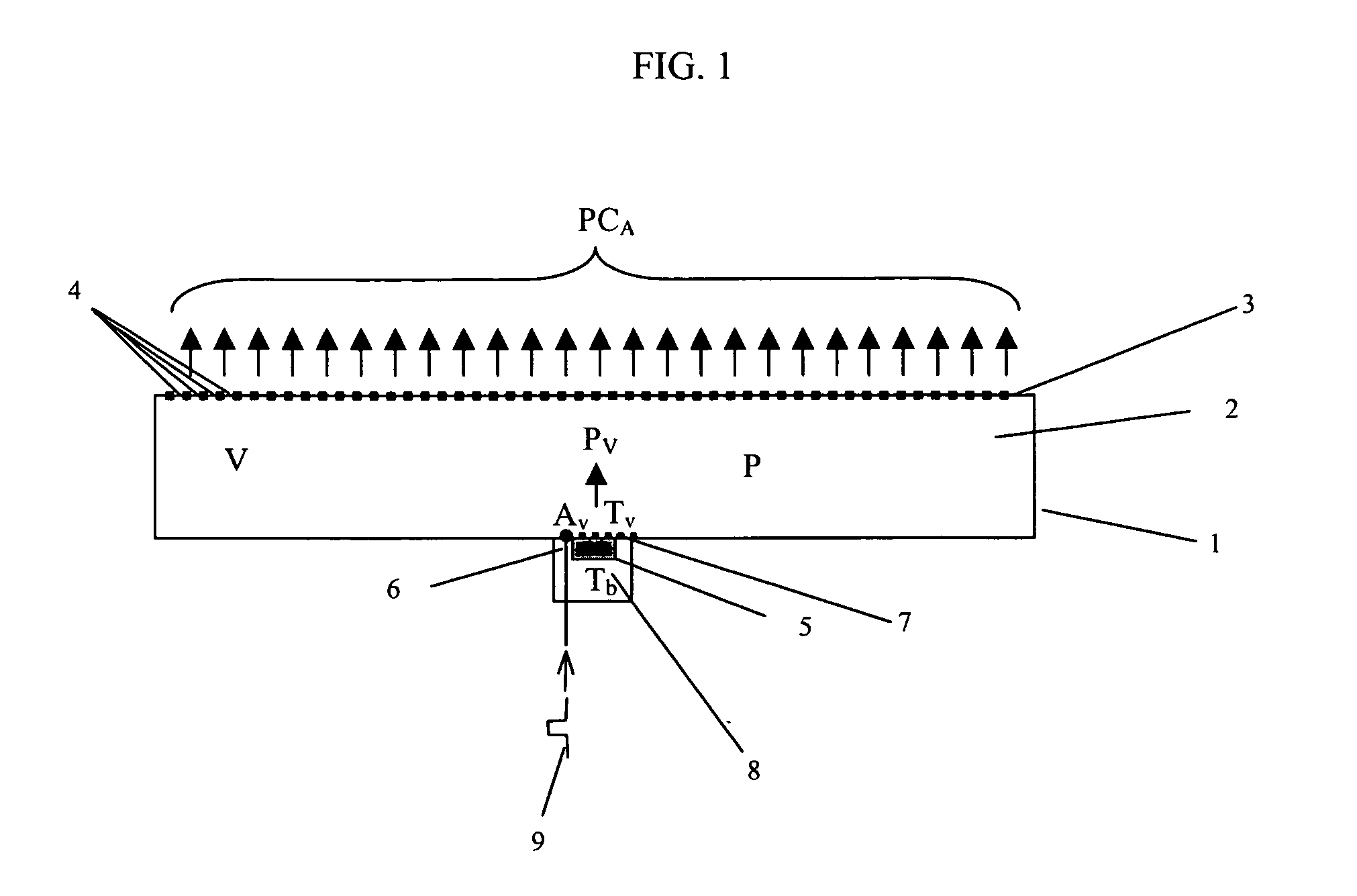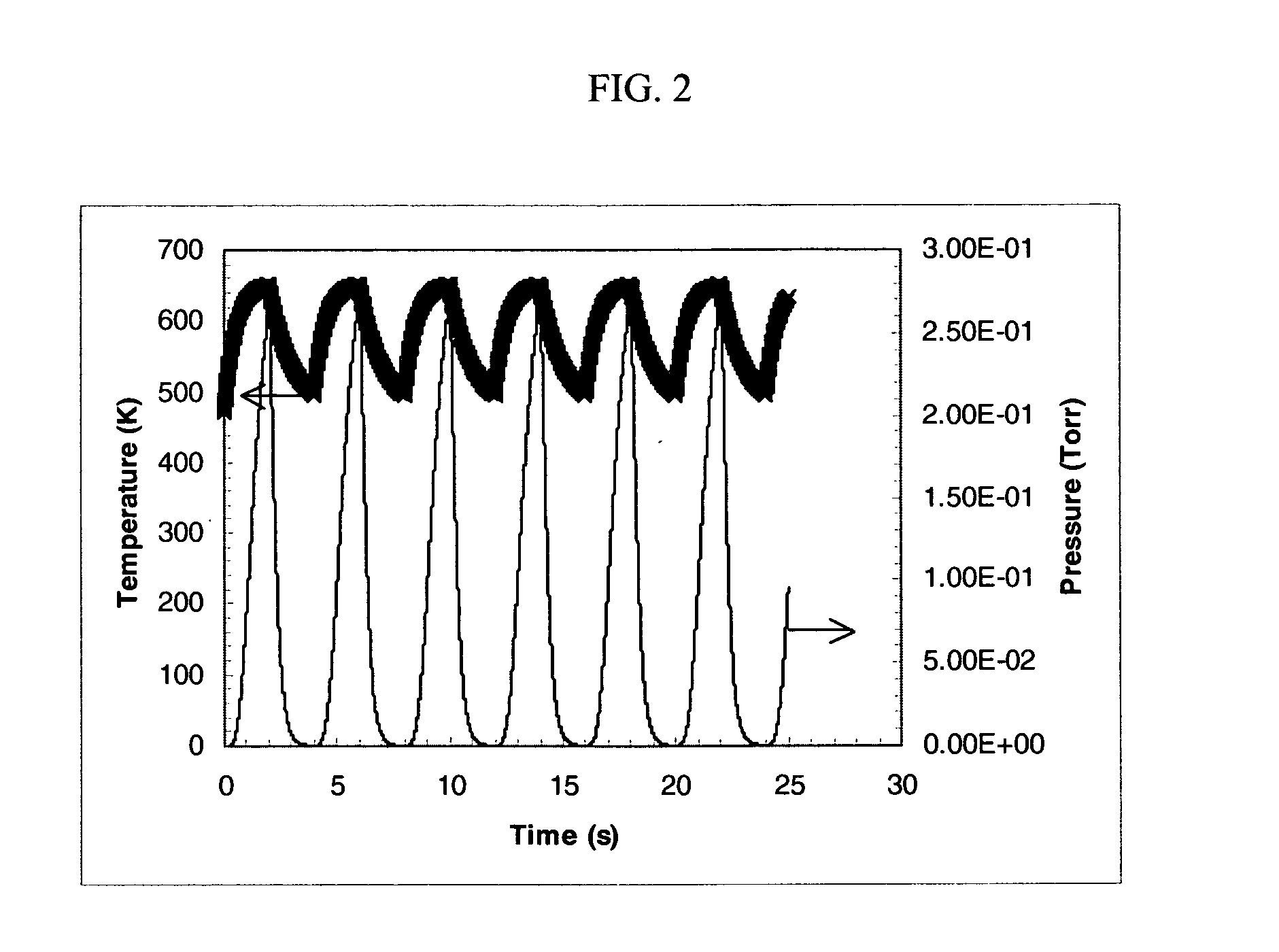Vaporizing temperature sensitive materials
- Summary
- Abstract
- Description
- Claims
- Application Information
AI Technical Summary
Benefits of technology
Problems solved by technology
Method used
Image
Examples
Embodiment Construction
[0047] In order to illustrate the benefits of the present invention two models were constructed. The first model calculates the time-dependent pressure inside a vaporization manifold in response to heat pulses applied to an evaporant (i.e., material to be deposited by vaporization). The second model calculates the coating uniformity along the direction of motion of a substrate moved in stepwise fashion across a deposition zone containing a source that emits a vapor plume of specified shape.
[0048] The source geometry and model parameters are shown in FIG. 1. The deposition source 1 comprises a heated manifold 2 having an exit surface 3 with an aperture 4 or plurality of apertures 4 having total conductance CA. The evaporant 5 (i.e., material to be deposited, sublimate, material to be vaporized or sublimed) is located in a vaporization region 6 and is placed in contact with a heating element 7 on one surface, and is in contact with a region of lower temperature 8 on most of its remai...
PUM
| Property | Measurement | Unit |
|---|---|---|
| Temperature | aaaaa | aaaaa |
| Thickness | aaaaa | aaaaa |
| Electrical conductance | aaaaa | aaaaa |
Abstract
Description
Claims
Application Information
 Login to View More
Login to View More - R&D
- Intellectual Property
- Life Sciences
- Materials
- Tech Scout
- Unparalleled Data Quality
- Higher Quality Content
- 60% Fewer Hallucinations
Browse by: Latest US Patents, China's latest patents, Technical Efficacy Thesaurus, Application Domain, Technology Topic, Popular Technical Reports.
© 2025 PatSnap. All rights reserved.Legal|Privacy policy|Modern Slavery Act Transparency Statement|Sitemap|About US| Contact US: help@patsnap.com



